You need to choose options for product.
Sale
-
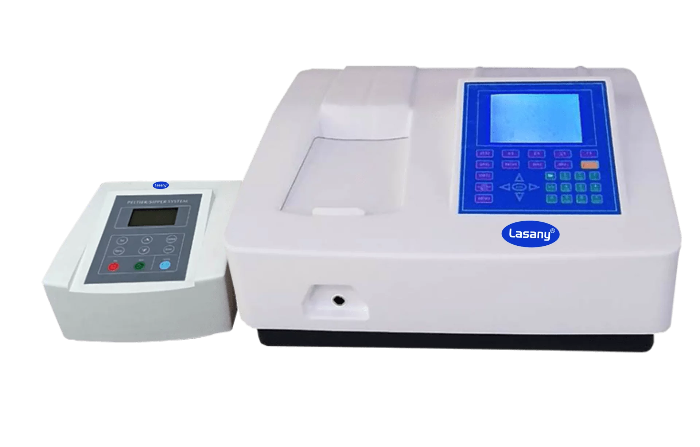 files/li-2800-with-p.webp
files/li-2800-with-p.webp
Double Beam Microprocessor UV-VIS Spectrophotometer equipped with a Peltier and Sipper System is a sophisticated analytical instrument designed for precise and accurate measurement of absorbance and transmittance of liquid samples across the ultraviolet (UV) and visible (VIS) spectrum.
Key Features and Components:
1. Double Beam Configuration:
- Design: In a double beam spectrophotometer, the light source is split into two beams before passing through the sample and reference compartments. This configuration allows for continuous comparison between the sample and reference, improving accuracy by compensating for any fluctuations in the light source intensity.
- Advantage: It ensures higher stability and accuracy, reducing errors due to light source drift and other variations.
2. Microprocessor Control:
- Functionality: The spectrophotometer is controlled by an integrated microprocessor, which automates various functions such as wavelength selection, data acquisition, and data processing.
- User Interface: Typically, these instruments come with a user-friendly interface, often featuring a touchscreen or keypad for easy operation and navigation through menus.
3. UV-VIS Range:
- Wavelength Range: The instrument covers both the UV range (usually 190-400 nm) and the visible range (400-700 nm), making it versatile for a wide variety of applications.
- Applications: It can be used for analyzing compounds in pharmaceuticals, chemicals, environmental samples, and more.
4. Peltier System:
- Temperature Control: The Peltier system provides precise temperature control of the sample compartment, which is crucial for experiments that require maintaining specific temperatures.
- Advantage: This feature is particularly beneficial for kinetic studies, enzyme reactions, and other temperature-sensitive assays.
5. Sipper System:
- Sample Handling: The sipper system automates the process of drawing liquid samples into the spectrophotometer’s cuvette, enhancing throughput and consistency.
- Convenience: It is particularly useful for high-throughput analysis, reducing manual handling and potential for contamination.
Technical Specifications:
- Wavelength Accuracy: Typically ±0.1 to ±0.5 nm.
- Spectral Bandwidth: Commonly around 1-2 nm, ensuring fine spectral resolution.
- Photometric Accuracy: Generally ±0.005 to ±0.002 Abs, ensuring reliable and precise measurements.
- Light Source: Often uses a deuterium lamp for UV and a tungsten-halogen lamp for visible range.
- Detector: Usually a silicon photodiode or photomultiplier tube for sensitive detection.
Software and Connectivity:
- Data Analysis: The integrated software allows for complex data analysis, including spectral scanning, kinetics, and quantitative analysis.
- Connectivity: Modern spectrophotometers offer USB and sometimes wireless connectivity for easy data transfer and integration with laboratory information management systems (LIMS).
Applications:
- Pharmaceutical Quality Control: Quantifying active pharmaceutical ingredients and impurities.
- Environmental Testing: Analyzing water quality by measuring pollutants and contaminants.
- Biochemical Research: Studying enzyme kinetics, protein concentrations, and DNA/RNA quantification.
- Chemical Analysis: Determining concentrations of various chemicals in solution.
Technical specification :
-Sample Holder : 8 Cell 10 mm Cuvette Holder
-Spectral Bandwidth : 1.0nm
-Photometric Range : 0~200%T, -4~4A, 0~9999C
-Basic Mode, Quantitative, Kinetics, Multi-wavelength, Wavelength Scan, DNA / Protein Test.
-Temperature Range : 15° C to 65° C
-Time range : 30s to 10 minutes
-Peristaltic Pump Speed Range : 1 to 1
-Sampling Speed Around : 50ml /min
- Regular price
- Rs.450,000.00
- Sale price
- Rs.300,000.00
Sale
Double Beam Microprocessor UV-VIS Spectrophotometer equipped with a Peltier and Sipper System is a sophisticated analytical instrument designed for precise and accurate measurement of absorbance and transmittance of liquid samples across the ultraviolet (UV) and visible (VIS) spectrum.
Key Features and Components:
1. Double Beam Configuration:
- Design: In a double beam spectrophotometer, the light source is split into two beams before passing through the sample and reference compartments. This configuration allows for continuous comparison between the sample and reference, improving accuracy by compensating for any fluctuations in the light source intensity.
- Advantage: It ensures higher stability and accuracy, reducing errors due to light source drift and other variations.
2. Microprocessor Control:
- Functionality: The spectrophotometer is controlled by an integrated microprocessor, which automates various functions such as wavelength selection, data acquisition, and data processing.
- User Interface: Typically, these instruments come with a user-friendly interface, often featuring a touchscreen or keypad for easy operation and navigation through menus.
3. UV-VIS Range:
- Wavelength Range: The instrument covers both the UV range (usually 190-400 nm) and the visible range (400-700 nm), making it versatile for a wide variety of applications.
- Applications: It can be used for analyzing compounds in pharmaceuticals, chemicals, environmental samples, and more.
4. Peltier System:
- Temperature Control: The Peltier system provides precise temperature control of the sample compartment, which is crucial for experiments that require maintaining specific temperatures.
- Advantage: This feature is particularly beneficial for kinetic studies, enzyme reactions, and other temperature-sensitive assays.
5. Sipper System:
- Sample Handling: The sipper system automates the process of drawing liquid samples into the spectrophotometer’s cuvette, enhancing throughput and consistency.
- Convenience: It is particularly useful for high-throughput analysis, reducing manual handling and potential for contamination.
Technical Specifications:
- Wavelength Accuracy: Typically ±0.1 to ±0.5 nm.
- Spectral Bandwidth: Commonly around 1-2 nm, ensuring fine spectral resolution.
- Photometric Accuracy: Generally ±0.005 to ±0.002 Abs, ensuring reliable and precise measurements.
- Light Source: Often uses a deuterium lamp for UV and a tungsten-halogen lamp for visible range.
- Detector: Usually a silicon photodiode or photomultiplier tube for sensitive detection.
Software and Connectivity:
- Data Analysis: The integrated software allows for complex data analysis, including spectral scanning, kinetics, and quantitative analysis.
- Connectivity: Modern spectrophotometers offer USB and sometimes wireless connectivity for easy data transfer and integration with laboratory information management systems (LIMS).
Applications:
- Pharmaceutical Quality Control: Quantifying active pharmaceutical ingredients and impurities.
- Environmental Testing: Analyzing water quality by measuring pollutants and contaminants.
- Biochemical Research: Studying enzyme kinetics, protein concentrations, and DNA/RNA quantification.
- Chemical Analysis: Determining concentrations of various chemicals in solution.
Technical specification :
-Sample Holder : 8 Cell 10 mm Cuvette Holder
-Spectral Bandwidth : 1.0nm
-Photometric Range : 0~200%T, -4~4A, 0~9999C
-Basic Mode, Quantitative, Kinetics, Multi-wavelength, Wavelength Scan, DNA / Protein Test.
-Temperature Range : 15° C to 65° C
-Time range : 30s to 10 minutes
-Peristaltic Pump Speed Range : 1 to 1
-Sampling Speed Around : 50ml /min
- Regular price
- Rs.450,000.00
- Sale price
- Rs.300,000.00
Sale
Couldn't load pickup availability
- Delivery Period :5-7 Working Days
- Replacement :3 Days Replacement as standard, Free of Cost
- Dedicated Support :Support from 9:30 AM to 6:00 PM everyday

Product Description
Double Beam Microprocessor UV-VIS Spectrophotometer equipped with a Peltier and Sipper System is a sophisticated analytical instrument designed for precise and accurate measurement of absorbance and transmittance of liquid samples across the ultraviolet (UV) and visible (VIS) spectrum.
Key Features and Components:
1. Double Beam Configuration:
- Design: In a double beam spectrophotometer, the light source is split into two beams before passing through the sample and reference compartments. This configuration allows for continuous comparison between the sample and reference, improving accuracy by compensating for any fluctuations in the light source intensity.
- Advantage: It ensures higher stability and accuracy, reducing errors due to light source drift and other variations.
2. Microprocessor Control:
- Functionality: The spectrophotometer is controlled by an integrated microprocessor, which automates various functions such as wavelength selection, data acquisition, and data processing.
- User Interface: Typically, these instruments come with a user-friendly interface, often featuring a touchscreen or keypad for easy operation and navigation through menus.
3. UV-VIS Range:
- Wavelength Range: The instrument covers both the UV range (usually 190-400 nm) and the visible range (400-700 nm), making it versatile for a wide variety of applications.
- Applications: It can be used for analyzing compounds in pharmaceuticals, chemicals, environmental samples, and more.
4. Peltier System:
- Temperature Control: The Peltier system provides precise temperature control of the sample compartment, which is crucial for experiments that require maintaining specific temperatures.
- Advantage: This feature is particularly beneficial for kinetic studies, enzyme reactions, and other temperature-sensitive assays.
5. Sipper System:
- Sample Handling: The sipper system automates the process of drawing liquid samples into the spectrophotometer’s cuvette, enhancing throughput and consistency.
- Convenience: It is particularly useful for high-throughput analysis, reducing manual handling and potential for contamination.
Technical Specifications:
- Wavelength Accuracy: Typically ±0.1 to ±0.5 nm.
- Spectral Bandwidth: Commonly around 1-2 nm, ensuring fine spectral resolution.
- Photometric Accuracy: Generally ±0.005 to ±0.002 Abs, ensuring reliable and precise measurements.
- Light Source: Often uses a deuterium lamp for UV and a tungsten-halogen lamp for visible range.
- Detector: Usually a silicon photodiode or photomultiplier tube for sensitive detection.
Software and Connectivity:
- Data Analysis: The integrated software allows for complex data analysis, including spectral scanning, kinetics, and quantitative analysis.
- Connectivity: Modern spectrophotometers offer USB and sometimes wireless connectivity for easy data transfer and integration with laboratory information management systems (LIMS).
Applications:
- Pharmaceutical Quality Control: Quantifying active pharmaceutical ingredients and impurities.
- Environmental Testing: Analyzing water quality by measuring pollutants and contaminants.
- Biochemical Research: Studying enzyme kinetics, protein concentrations, and DNA/RNA quantification.
- Chemical Analysis: Determining concentrations of various chemicals in solution.
Technical specification :
-Sample Holder : 8 Cell 10 mm Cuvette Holder
-Spectral Bandwidth : 1.0nm
-Photometric Range : 0~200%T, -4~4A, 0~9999C
-Basic Mode, Quantitative, Kinetics, Multi-wavelength, Wavelength Scan, DNA / Protein Test.
-Temperature Range : 15° C to 65° C
-Time range : 30s to 10 minutes
-Peristaltic Pump Speed Range : 1 to 1
-Sampling Speed Around : 50ml /min
Similar Products
-
Sale
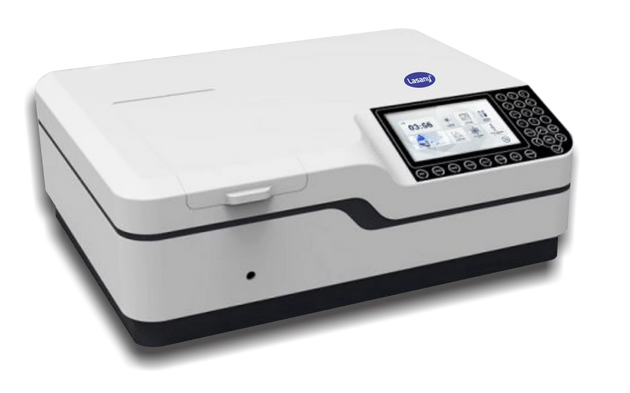
Vendor: Lasany
Double beam xenon flash lamp spectrophotometer
Sale price Rs.450,000.00Regular price Rs.650,000.00 -
Sale
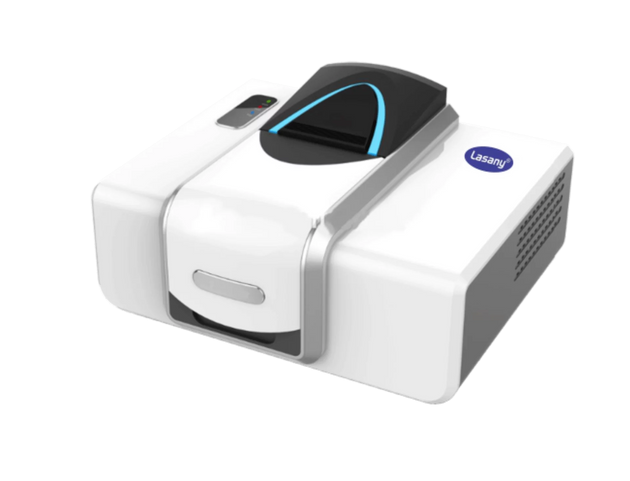
Vendor: Lasany
FTIR-Spectrometer
Sale price Rs.1,200,000.00Regular price Rs.1,600,000.00 -
Sale
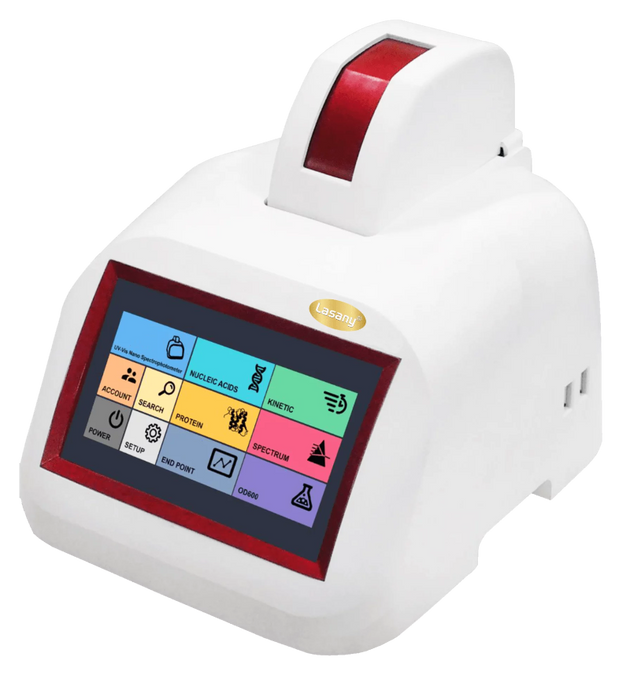
Vendor: Lasany
Nano Spectrophotometer
Sale price Rs.450,000.00Regular price Rs.700,000.00 -
Sale
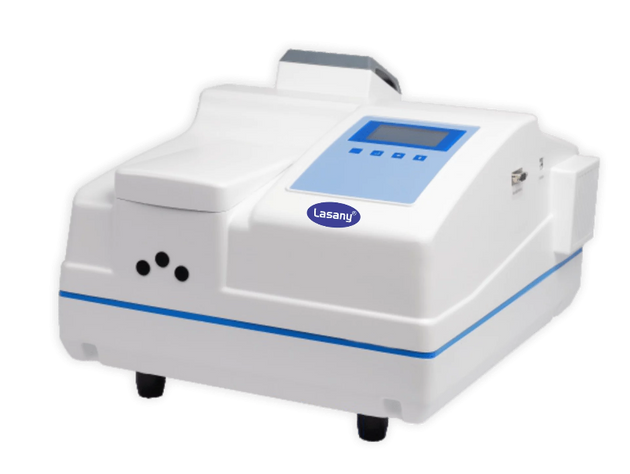
Vendor: Lasany
Fluorescence Spectrophotometer
Sale price Rs.400,000.00Regular price Rs.600,000.00
Customers also bought
Complementary products
-
Free Shipping
Orders above Rs. 1000.
-
On Time Delivery
Within 7 days.
-
Money Back Guarantee
14 day Return*
-
Service Support
Online Installation Support.





